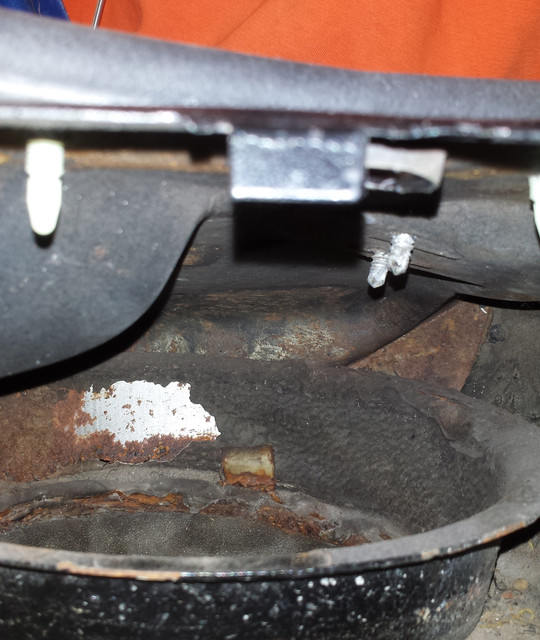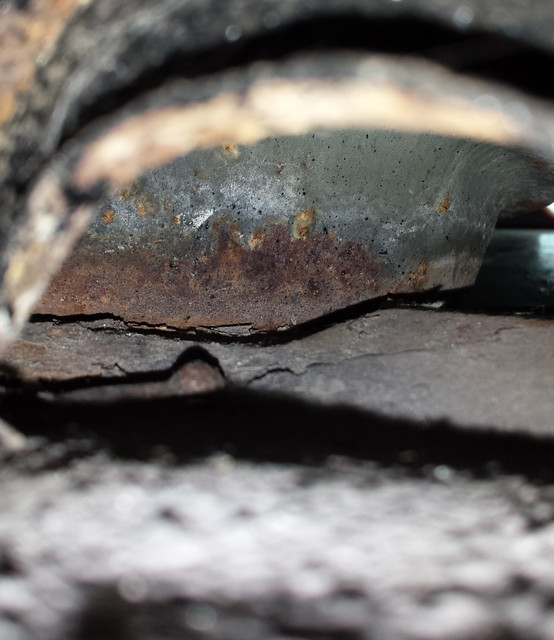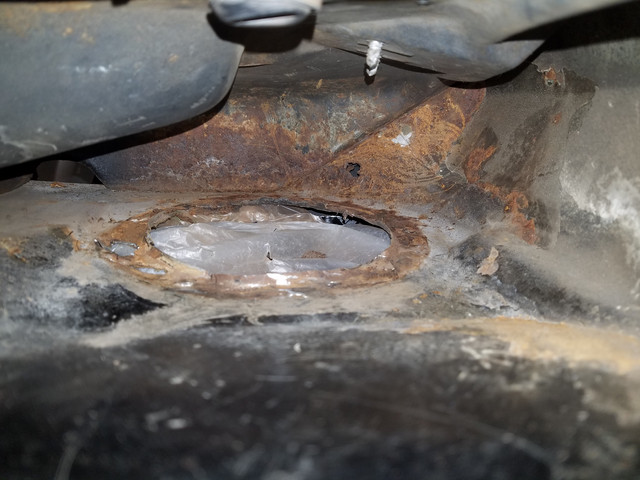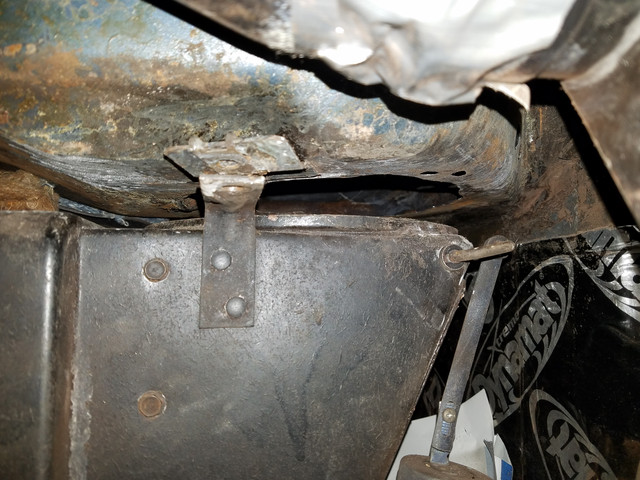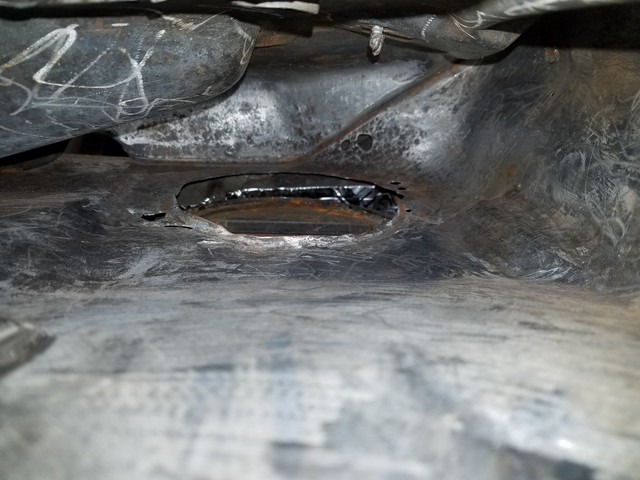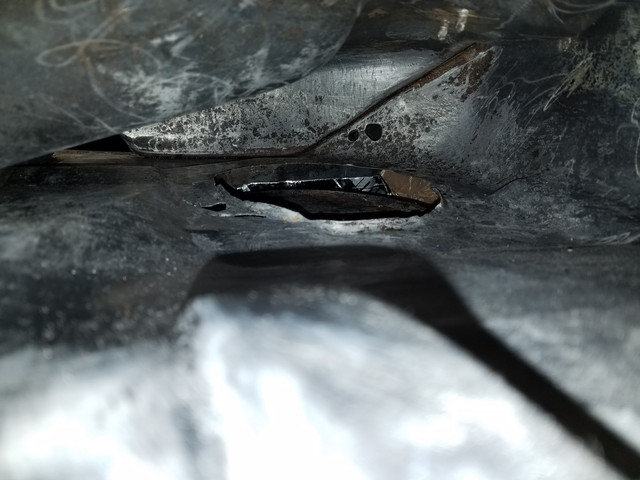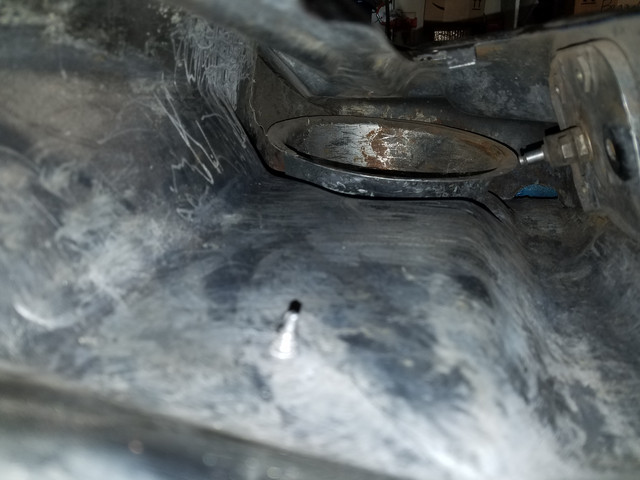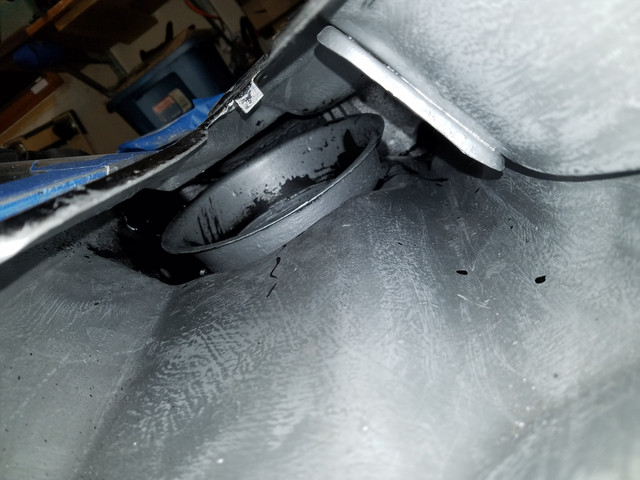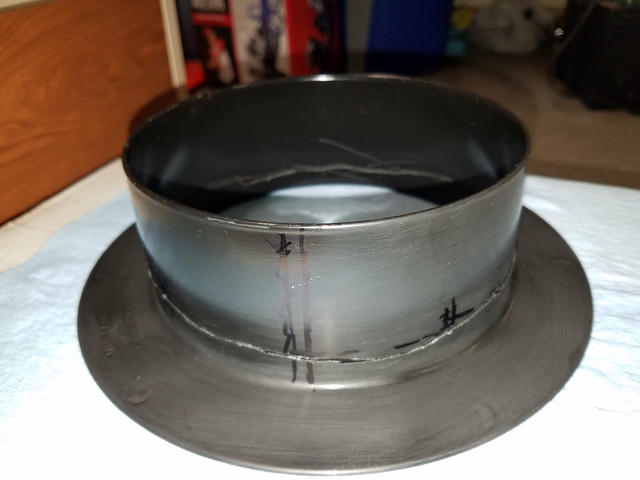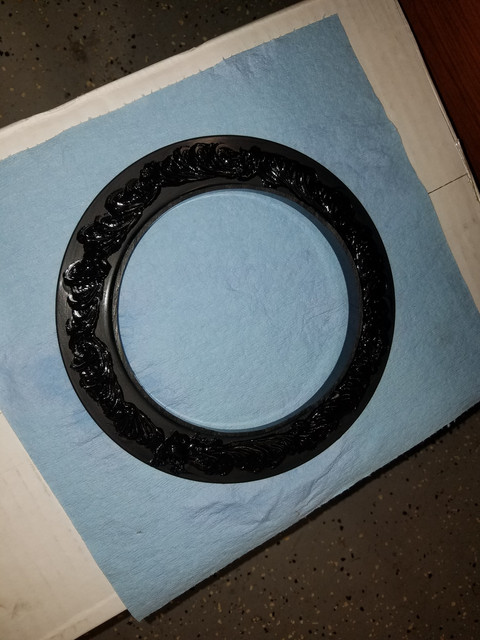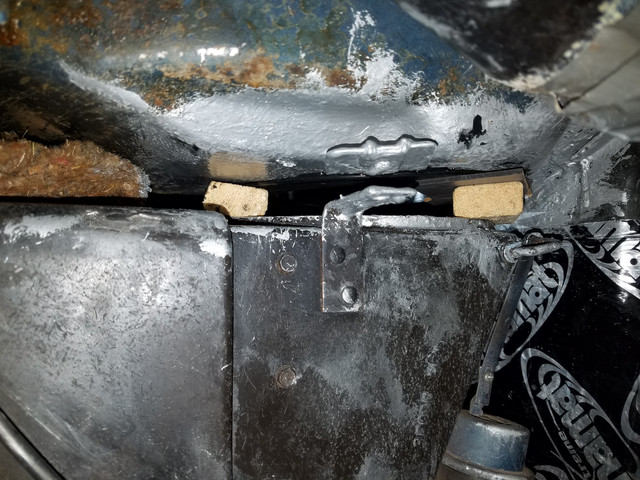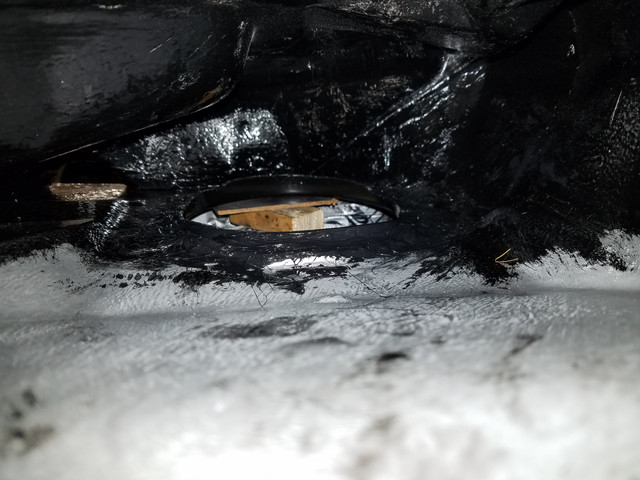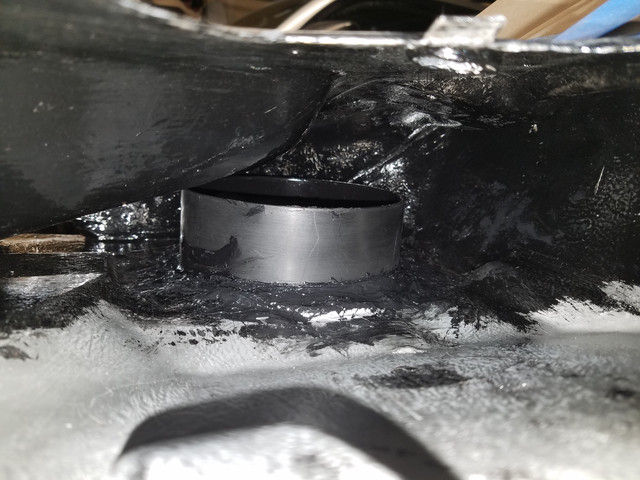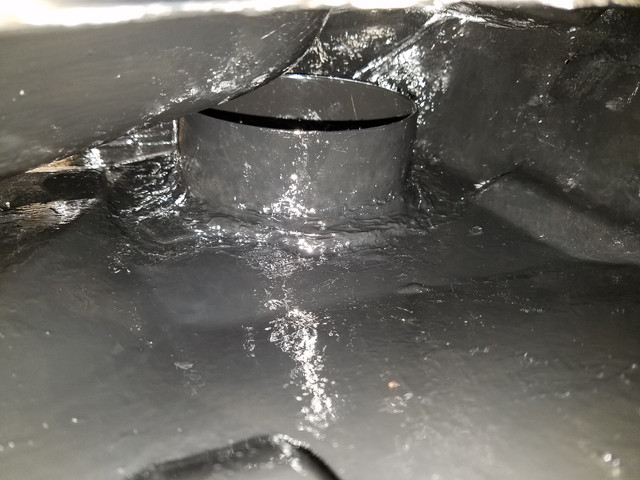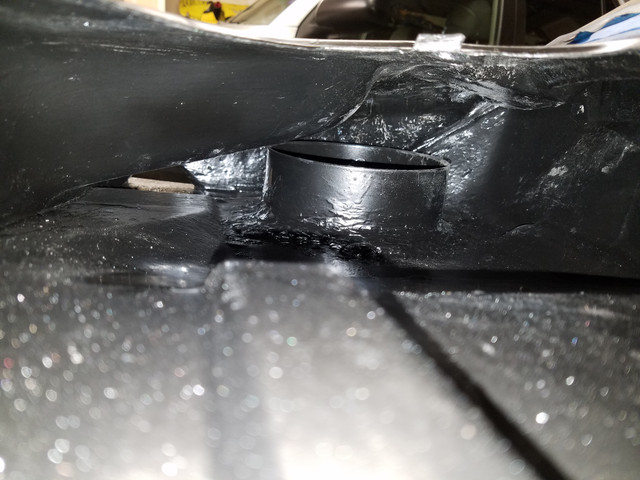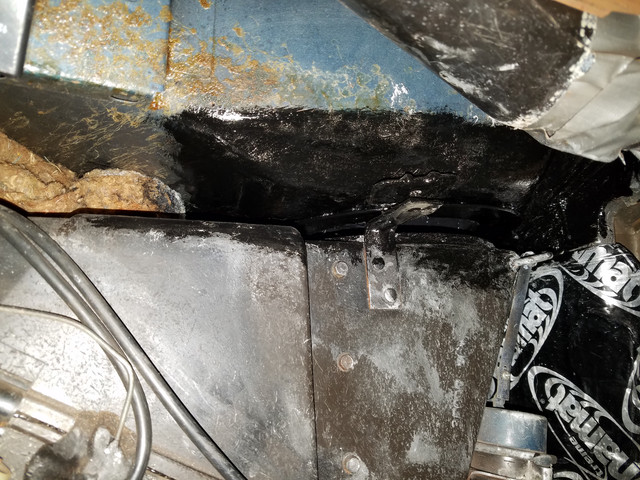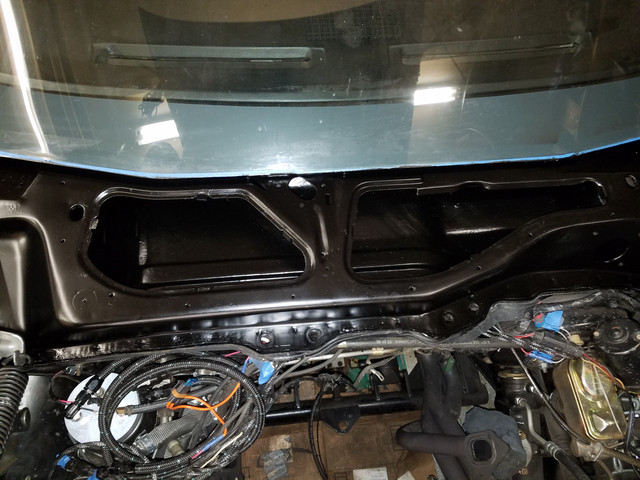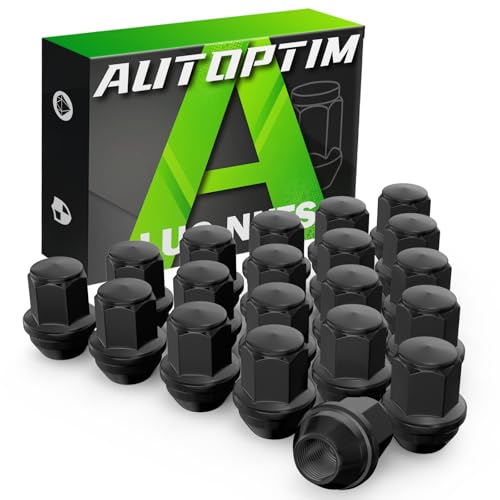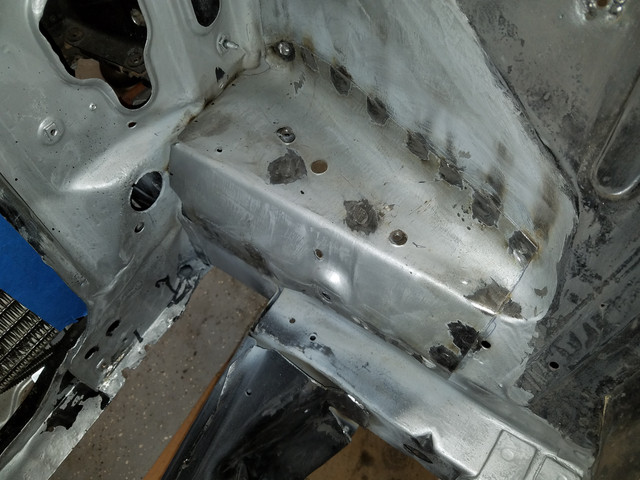- Joined
- Aug 14, 2014
- Messages
- 4,543
- Reaction score
- 1,590
- Location
- Madison, WI
- My Car
- 1971 Mach 1 w/408C stroker
Disclaimer: if you are into rotisserie restoration this post may be harmful and painful to read.
I had this dilemma for a long time in regards to what to do with the cowl. I did an examination of the cowl with the aid of a snake cam, and identified rust issues in the area of the passenger side hat. The top half of the cowl was in good condition, the middle section of the bottom cowl was great and the driver's side hat area was good, but with some seam sealer starting to fall. I didn't feel there was enough rust issues to justify replacing the whole cowl, but there was enough to justify doing something about it.
After measuring and researching I decided to develop my own method that would involve the use of the plastic hat option available for earlier Mustangs. One of the challenges with my method is that I didn't want to remove the heater and A/C box. I wanted to accomplish this repair with the least intrusion as possible. So here is a summary of what I did. Edit: it was extremely helpful that I had removed the engine and transmission for other work, which allowed me to stand next to the cowl. Otherwise, it will be a lot more difficult with the engine in.
I started by removing the glove box on the interior. On the exterior, I disassembled all the external attachments to the cowl. I removed all the foam that seats between the heater box and cowl opening from the passenger side. The next step was to cut the old hat out. This proved to be a challenge due to the tight space available. My solution was to first cover the opening of the heater box with a round piece of wood I had laying around from a toy, and a round piece of sheet metal leftover from who knows what. The idea here is to protect the box not only from debris, but also from damage from the cutting and grinding. I did the actual cutting of the hat from the exterior using a Dremel, Dremel with 90 degree attachment and seam chisel. Given the tight space to work in, all went well, except the forward facing section of the hat where I needed the chisel to break two spot welds. This is the section that is the most difficult to access and cut. In hindsight, it would have probably been easier by using a snake Dremel extension.
Once the rusty hat was out of the way, I was able to reassess the extent of rust. I continued cutting/drilling out all the rusted sections. Then grinded, sanded, scraped all the rust from the interior and exterior of the cowl. On the driver's side I removed all the surface rust I could, plus removed as much of the seam sealer I could. It is possible to get to all these places with a lot of contortionism of hands and arms, except to the section of the driver's side hat that faces towards the left. The cleaning and grinding on this section was very limited. However, I was able to inspect it with the camera and it appeared in good condition. As a note here, having smaller arms/hands helps a lot; otherwise, it will be difficult to get to all these places in such tight quarters. Even with smaller arms and hands, it was quite the challenge to scrape all the surfaces. It took a lot of time, bruises and pain. In some places I had to use a mirror and/or camera to make sure all surfaces were clean of rust. Once all was scraped and ground, I proceeded with the typical cleaning and preparation of surfaces to apply 3 coats of RustBullet. Since you have to get your hands through small spaces, this process is fairly messy. I coated both halves of the cowl, the surfaces on the interior of the car near the passenger's hat, plus both sides of the driver's side hat. After RustBullet I glued some pieces of prepped sheetmetal in a few places where there were bigger holes left from the rust repair. Then I used RustBullet's BlackShell paint to top coat the area around the passenger side hat. I had to topcoat this area first because once I installed the hat I was not going to have access to it. On the driver's side I seam sealed the good hat on the inside and outside diameters.
Now the trick! To install the plastic hat, since I am inserting it from the interior of the car with the heater box in place, there is no room for the whole hat. What I did, was to measure the maximum height of the hat that I could fit and cut the hat. I purposely didn't cut straight to achieve an uneven cut that would allow to better glue the hat at a later time. Once the hat was cut, I added a lot of seam sealer to the flange and easily inserted the hat from the interior of the car. I placed wood spacers between the heater box and hat to press up and assure good adhesion. Beforehand, I sanded the painted surfaces to help with adhesion of the seam sealer. Once the hat was in place, I added several coats of seam sealer around the gap between the hat and cowl. The diameter of the plastic hat's flange is large enough to cover the opening. However, the diameter of the vertical part of the hat is smaller than that of the original. Therefore I added several layers of seam sealer to make sure there is a good seal between the hat and cowl. I then glued the piece of the hat I had cut. Since the plastic hat is ABS, I used ABS pipe cement. I like this cement for ABS since it is able to solvate ("melt") the surfaces that are being joined. The cement is a mix of solvents and ABS. After the cement was dried I added some seam sealer at the joint of the hat halves to seal any gaps. Then, I top coated the whole cowl with BlackShell. A note here is that the BlackShell is way too glossy. Since I was later painting the exterior side of the top cowl, I repainted the visible sections of the cowl so they don't look too shiny. In any case, you will have to look through the grills to notice. The paint was Eastwood's black chassis paint spray.
This method took a lot of work. I did it in conjunction with fixing the battery apron, radiator support and strut rod cross member. Doing all these concurrently, working a few hours four nights a week, it took about three months. I don't know if this method was quicker than removing and rewelding the cowl. One thing for sure is that it is less intrusive and it was less intimidating to me. No need to remove windshield, heater box, and no welding required. Like I said at the beginning, the intent here was not beauty, but a practical repair with lasting protection. No one will typically look that closely inside the cowl or behind the glove box to notice this repair. I am confident I was able to clean most, if not all, of the rust, and I was able to protect and seal the cowl from future rust.
The pictures below are in order depicting my description.
I had this dilemma for a long time in regards to what to do with the cowl. I did an examination of the cowl with the aid of a snake cam, and identified rust issues in the area of the passenger side hat. The top half of the cowl was in good condition, the middle section of the bottom cowl was great and the driver's side hat area was good, but with some seam sealer starting to fall. I didn't feel there was enough rust issues to justify replacing the whole cowl, but there was enough to justify doing something about it.
After measuring and researching I decided to develop my own method that would involve the use of the plastic hat option available for earlier Mustangs. One of the challenges with my method is that I didn't want to remove the heater and A/C box. I wanted to accomplish this repair with the least intrusion as possible. So here is a summary of what I did. Edit: it was extremely helpful that I had removed the engine and transmission for other work, which allowed me to stand next to the cowl. Otherwise, it will be a lot more difficult with the engine in.
I started by removing the glove box on the interior. On the exterior, I disassembled all the external attachments to the cowl. I removed all the foam that seats between the heater box and cowl opening from the passenger side. The next step was to cut the old hat out. This proved to be a challenge due to the tight space available. My solution was to first cover the opening of the heater box with a round piece of wood I had laying around from a toy, and a round piece of sheet metal leftover from who knows what. The idea here is to protect the box not only from debris, but also from damage from the cutting and grinding. I did the actual cutting of the hat from the exterior using a Dremel, Dremel with 90 degree attachment and seam chisel. Given the tight space to work in, all went well, except the forward facing section of the hat where I needed the chisel to break two spot welds. This is the section that is the most difficult to access and cut. In hindsight, it would have probably been easier by using a snake Dremel extension.
Once the rusty hat was out of the way, I was able to reassess the extent of rust. I continued cutting/drilling out all the rusted sections. Then grinded, sanded, scraped all the rust from the interior and exterior of the cowl. On the driver's side I removed all the surface rust I could, plus removed as much of the seam sealer I could. It is possible to get to all these places with a lot of contortionism of hands and arms, except to the section of the driver's side hat that faces towards the left. The cleaning and grinding on this section was very limited. However, I was able to inspect it with the camera and it appeared in good condition. As a note here, having smaller arms/hands helps a lot; otherwise, it will be difficult to get to all these places in such tight quarters. Even with smaller arms and hands, it was quite the challenge to scrape all the surfaces. It took a lot of time, bruises and pain. In some places I had to use a mirror and/or camera to make sure all surfaces were clean of rust. Once all was scraped and ground, I proceeded with the typical cleaning and preparation of surfaces to apply 3 coats of RustBullet. Since you have to get your hands through small spaces, this process is fairly messy. I coated both halves of the cowl, the surfaces on the interior of the car near the passenger's hat, plus both sides of the driver's side hat. After RustBullet I glued some pieces of prepped sheetmetal in a few places where there were bigger holes left from the rust repair. Then I used RustBullet's BlackShell paint to top coat the area around the passenger side hat. I had to topcoat this area first because once I installed the hat I was not going to have access to it. On the driver's side I seam sealed the good hat on the inside and outside diameters.
Now the trick! To install the plastic hat, since I am inserting it from the interior of the car with the heater box in place, there is no room for the whole hat. What I did, was to measure the maximum height of the hat that I could fit and cut the hat. I purposely didn't cut straight to achieve an uneven cut that would allow to better glue the hat at a later time. Once the hat was cut, I added a lot of seam sealer to the flange and easily inserted the hat from the interior of the car. I placed wood spacers between the heater box and hat to press up and assure good adhesion. Beforehand, I sanded the painted surfaces to help with adhesion of the seam sealer. Once the hat was in place, I added several coats of seam sealer around the gap between the hat and cowl. The diameter of the plastic hat's flange is large enough to cover the opening. However, the diameter of the vertical part of the hat is smaller than that of the original. Therefore I added several layers of seam sealer to make sure there is a good seal between the hat and cowl. I then glued the piece of the hat I had cut. Since the plastic hat is ABS, I used ABS pipe cement. I like this cement for ABS since it is able to solvate ("melt") the surfaces that are being joined. The cement is a mix of solvents and ABS. After the cement was dried I added some seam sealer at the joint of the hat halves to seal any gaps. Then, I top coated the whole cowl with BlackShell. A note here is that the BlackShell is way too glossy. Since I was later painting the exterior side of the top cowl, I repainted the visible sections of the cowl so they don't look too shiny. In any case, you will have to look through the grills to notice. The paint was Eastwood's black chassis paint spray.
This method took a lot of work. I did it in conjunction with fixing the battery apron, radiator support and strut rod cross member. Doing all these concurrently, working a few hours four nights a week, it took about three months. I don't know if this method was quicker than removing and rewelding the cowl. One thing for sure is that it is less intrusive and it was less intimidating to me. No need to remove windshield, heater box, and no welding required. Like I said at the beginning, the intent here was not beauty, but a practical repair with lasting protection. No one will typically look that closely inside the cowl or behind the glove box to notice this repair. I am confident I was able to clean most, if not all, of the rust, and I was able to protect and seal the cowl from future rust.
The pictures below are in order depicting my description.
Last edited by a moderator:





